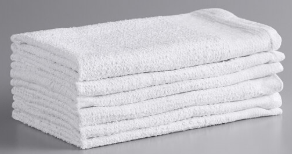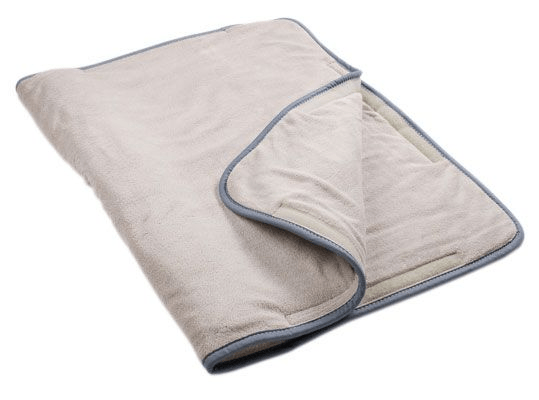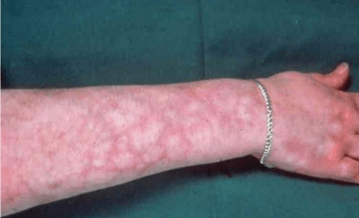Pain
Pain
Thermal
US
Compression
Aquatic
What spinal cord tract do pain signals travel through to reach the brain?
Answer: Spinothalamic tract
Resource: Behrens pg 23 and Figure 2.6
Name 3 thermal agent modalities that can be integrated into a home program?
Answer: Paraffin, air activated heat wraps, cold packs, ice bath, ice massage, controlled cold units (cryo cuff), vapocoolant spray, infrared lamps
Resource: Behrens pg 74-80
Which parameter of ultrasound is missing from the following SOAP note statement?
A 2cm transducer heat was utilized with the following parameters: 20% duty cycle, 3 MHz, for 10 minutes.
Answer: Intensity (W/cm2)
Resource: Behrens pg 98
Your patient’s blood pressure is 110/66 mmHg. What’s the maximum amount of pressure that can be used during pneumatic compression.?
Answer: 66 mmHg
Resource: Behrens pg 208
If a patient is submerged in water up to mid-torso level, approximately what percentage of their body weight are they bearing?
Answer: 25%
Resource: Behrens pg 140
How many single towels are needed between the skin and a hot pack?

6-8 towels. One unfolded towel represents 1 “layer”.
Behrens pg 72
Identify three physiological or environmental factors that stimulate the release of endogenous opioids in the body.
Answer: Release of endogenous opiates is stimulated by systemic pain, intense exercise, laughter, relaxation, meditation, sexual activity, acupuncture, and electrical stimulation
Resource: Behrens pg 22
According to the hunting response, what happens on a physiologic level with extended cryotherapy durations >20 minutes?
Answer: Vasodilation
Resource: Behrens pg 78
During therapeutic ultrasound, which tissues are likely to produce an unwanted pain response when overheated due to sound wave refraction along bony surfaces?
Answer: Periosteum

Resource: Behrens pg 102
What is the correct pressure setting for intermittent compression of the upper extremity?
Answer: 30-60 mmHg
Resource: Physio-u
In a prone aquatic position with buoyancy cuffs on the ankles, which muscle groups work against resistance and are likely to be strengthened?
Answer: Hip flexor & knee extensor muscles
Resource: Behrens pg 139 & 142
What is the temperature range for the hydrocollator?
159.8º - 174.2ºF (71º - 79ºC)
Behrens pg 72
What are specialized sensory receptors that detect and respond to a noxious stimulus?
Answer: Nociceptors
Resource: Behrens pg 13
Which modalities can not accommodate elevation of a limb if needed?
Answer: Ice bath, fluidotherapy, hydrotherapy
Resource: Behrens section 2
What type of tissue has the highest attenuation and absorption of sound waves?
Answer: Bone
Resource: Behrens pg 102
What is the on:off cycle time for use of intermittent compression of a residual limb?
Answer: 4:1
Resource: Physio-u
Name 2 ways to add resistance to aquatic therapy exercises using the principles of hydromechanics. (not including use of equipment)
Answer: Moving faster (creating drag and turbulence), using larger movements (more surface area), or moving near the water’s surface (where there’s more turbulence)
Resource: Behrens pg 137
How many commercial terry cloth covers are needed between the skin and a hot pack?

3-4 covers. Each cover represents 2-3 “layers”.
Behrens pg 72
Name 3 characteristics of chronic pain.
Answer: Lasts >3 months, dull pain, depression, lead to long term loss of function, not localized, benefit from a team approach
Resource: Behrens pg 15
Which heat modality does not lose heat throughout the treatment duration time?
Answer: Fluidotherapy
Resource: Behrens pg 75
What is the first phase of cavitation that causes the gas bubbles in the body to shrink?
Answer: Compression phase
Resource: Behrens pg 98
List three key principles to keep in mind when performing residual limb compression wrapping.
Start distal and move proximal
No wrinkles or gaps
Use diagonals
Overlap each section by 50%
Pressure should gradually decrease as you move proximally
Secure wrap with tape (no pins or clips)
Re-wrap every 4-6 hours to avoid slipping
Resource: O’Sullivan pg 866
How are ankle weights utilized during aquatic therapy?
Answer: Stability (counteract buoyancy)


Resource: Behrens pg 139
What is the temperature range for paraffin?
117º-130ºF (47-54.4ºC)
Behrens pg 72
According to the gate control theory, which type of nerve fibers inhibit pain transmission at the level of the substantia gelatinosa in the spinal cord?
Answer: Large A-beta fibers
Resource: Behrens pg 15
After applying an ice pack for 2 minutes you perform a skin check and see the following in the picture. What do you do next?

Answer: STOP TREATMENT!!!
Resource: Behrens pg 41
Your patient has 8/10 pain in their piriformis muscle, which setting would you use to BEST treat their symptoms?
Answer: 100% duty cycle, 1.5 W/cm2, 1 MHz
Resource: Behrens pg 113
Name 5 contraindications for compression
Answer:
Malignancy
Hypoproteinemia
Impaired mentation
Impaired sensation
Congestive Heart Failure
DVT or thrombophlebitis
Uncontrolled hypertension
Severe peripheral arterial disease
Vascular insufficiency (stroke or pulmonary embolism)
Pulmonary edema
Skin infection
Fracture site or acute trauma
Superficial peripheral nerves
Resource: Behrens pg 475
When manual resistance is applied by the therapist during Bad Ragaz aquatic therapy, what type of contraction is happening? (Consider open vs closed chain and concentric vs isometric vs eccentric)
Answer: concentric closed chain exercise
Resource: Behrens pg 148 and Table 6-6
Which temperature for aquatic therapy is BEST for therapeutic exercises?
94°F or 34.4°C
Behrens pg 142